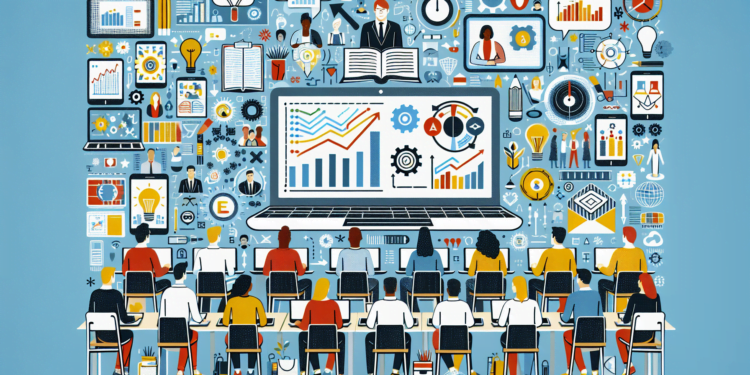The frontier of artificial intelligence (AI) is evolving by leaps and bounds, and at the epicenter of this revolution lies Online Learning, a branch of machine learning that allows machines to continuously assimilate and adapt to new and changing data. This modality contradicts the static nature of traditional batch learning, positioning itself as both a technical challenge and a promise for dynamic and real-time applications.
Fundamental Theories and Learning Schemes
Online learning is indebted to theories such as the Universal Approximation Theorem, which provides the mathematical foundation ensuring that a neural network can represent any function with sufficient richness in its architecture. Meanwhile, schemes like Stochastic Gradient Descent (SGD) allow for the incremental updating of models with each sample.
Advancements in the Algorithm and Lifelong Learning
Recent forays into Adaptive Deep Neural Networks have demonstrated the ability to adjust their depth and width based on the complexity of the data stream. On the other hand, lifelong learning faces the challenge of catastrophic forgetting, where a model loses previous knowledge when learning new information. Techniques like Elastic Weight Consolidation (EWC), which protect the model parameters that are critical for old tasks, emerge as viable solutions.
Multi-Agent Systems and Co-learning
Cooperative learning among multiple AI agents, who share and transfer knowledge among themselves, explores new dimensions of distributed AI. With systems that use Consensus Learning algorithms to achieve a balance between local adaptation and global consensus, enhanced performance in complex and dynamic tasks has been achieved.
Emerging Practical Applications
In practical terms, online learning is brimming with potential. Sophisticated examples are found in algorithmic trading, where high-frequency prediction models are updated with each new transaction to capture market trends in milliseconds, or in autonomous vehicle systems, which process continuous streams of sensory data to make critical adjustments in real-time, ensuring safety and effectiveness in driving.
Challenges of Online Learning
One of the most significant challenges is the efficient implementation of these systems in hardware, developing the computational capacity to support the required update speed. This is reflected in research projects focused on the creation of neuromorphic chips, designed to emulate the plasticity of the human brain.
The evaluation and validation of online learning models present an inherent difficulty. It is crucial to develop robust and real-time metrics that provide a reliable estimate of the model’s performance against the evolving data stream, often designing adaptive cross-validation schemes that accommodate the changing characteristics of the data.
Comparisons and Convergences
The comparison between online learning and conventional methods has highlighted the superiority of the former in non-stationary environments. Case studies have shown that online learning systems can outperform their batch counterparts in changing environments such as real-time fraud detection, where fraudulent patterns can change rapidly.
Projection and Future Innovations
Looking to the future, the convergence of online learning with other disruptive branches such as explainable AI (XAI), where the creation of transparent and comprehensible models will become essential for their implementation in critical fields like personalized medicine, is anticipated. Furthermore, the advancement toward algorithms that can self-mitigate their bias and learn ethically is emerging as a priority.
Conclusions
Online learning represents a promise for AI systems capable of adapting and thriving in an impermanently diverse and complex reality. By interweaving fundamental theories, cutting-edge algorithms, and real-impact practical applications, this domain positions itself as a central axis in the cartography of contemporary and future AI. It will continue to challenge and expand the boundaries of what machines can learn, how they can learn it, and most importantly, how they can continue learning from a world that never stops changing.






















